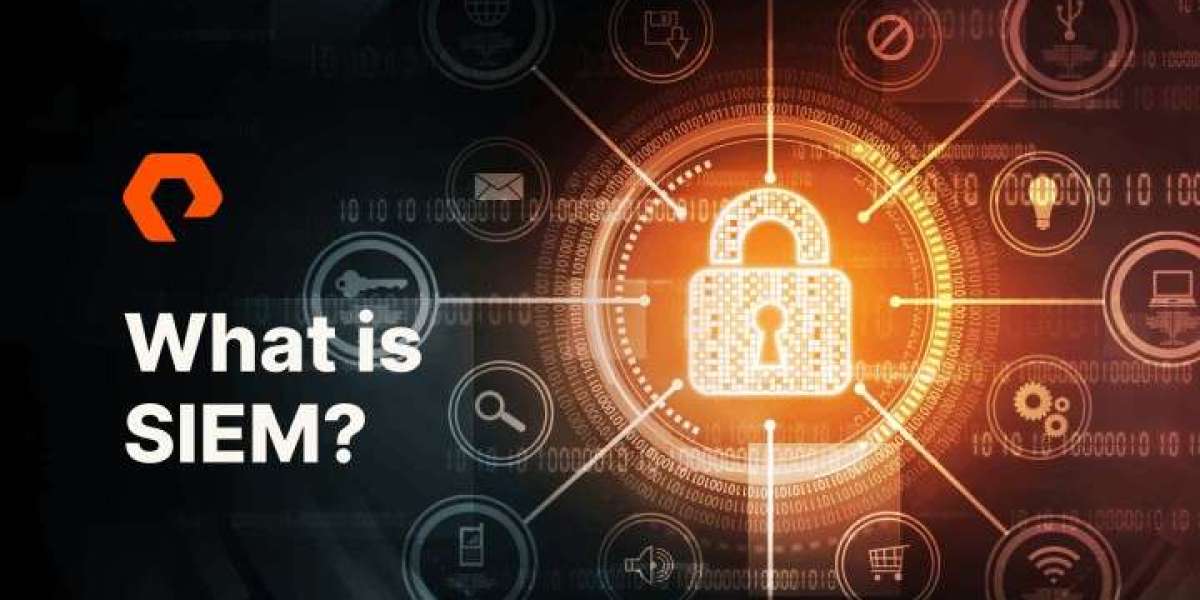In today’s rapidly evolving threat landscape, traditional Security Information and Event Management (SIEM) solutions are no longer sufficient to handle the volume, variety, and velocity of modern cyber threats. As organizations move toward hybrid and cloud infrastructures, attackers exploit new attack surfaces, making it essential for security teams to have real-time visibility, advanced analytics, and automated response capabilities. This has given rise to the Next-Generation SIEM (Next-Gen SIEM) — an evolution that goes beyond log management to deliver intelligent, automated, and proactive threat detection and response.
Here are the key features organizations should look for when selecting a Next-Gen SIEM solution.
1. Advanced Analytics and Machine Learning (ML)
Modern cyber threats are complex and stealthy, often blending into normal network activity. A Next-Gen SIEM should use machine learning (ML) and user and entity behavior analytics (UEBA) to detect anomalies that traditional rule-based systems might miss.
Why it matters:
ML-driven SIEMs can automatically learn from historical data, detect deviations from baseline behavior, and identify potential insider threats, compromised accounts, or lateral movements — all with minimal manual tuning.
Look for:
- Built-in ML models for anomaly detection
- UEBA for identifying risky user or device behavior
- Adaptive thresholds that evolve with the environment
2. Cloud and Hybrid Environment Support
As organizations migrate workloads to the cloud, SIEM solutions must adapt. Next-Gen SIEMs are built to seamlessly integrate across hybrid infrastructures, monitoring activity in on-premises, multi-cloud, and SaaS environments.
Why it matters:
Cloud-native threats such as misconfigurations, unauthorized access, and API abuse require specialized visibility. A Next-Gen SIEM must collect and correlate logs from AWS, Azure, Google Cloud, and other platforms in real time.
Look for:
- Native cloud connectors and APIs
- Visibility into cloud workloads, containers, and serverless applications
- Compliance mapping for cloud environments (e.g., CIS, NIST, ISO)
3. Real-Time Threat Detection and Response
A Next-Gen SIEM should not only detect threats but also respond to them instantly. This requires tight integration with Security Orchestration, Automation, and Response (SOAR) platforms, enabling automated actions such as isolating endpoints, blocking IPs, or disabling compromised accounts.
Why it matters:
Reducing Mean Time to Detect (MTTD) and Mean Time to Respond (MTTR) is critical to minimizing damage during an attack.
Look for:
- Automated playbook execution
- Real-time correlation of events across systems
- Integration with EDR, NDR, and SOAR platforms
4. Threat Intelligence Integration
Next-Gen SIEMs should consume data from threat intelligence (TI) feeds to enrich alerts with context about known malicious IPs, domains, and indicators of compromise (IOCs).
Why it matters:
Threat intelligence helps analysts quickly differentiate between benign and malicious activity, improving alert accuracy and reducing false positives.
Look for:
- Integration with multiple TI sources (commercial, open-source, industry feeds)
- Automated enrichment of alerts with IOC data
- Real-time updates and correlation with internal events
5. Scalability and Performance
Data volumes are exploding — from endpoints, cloud services, IoT devices, and applications. A Next-Gen SIEM must scale effortlessly to handle growing log and event data without performance degradation.
Why it matters:
Scalable architecture ensures continuous visibility even during traffic spikes or large-scale attacks.
Look for:
- Cloud-native or distributed architecture
- Elastic storage and compute scalability
- Efficient log ingestion and indexing capabilities
6. Automated Correlation and Contextualization
Manually correlating security events across multiple systems is time-consuming and error prone. Next-Gen SIEMs use automated correlation engines to connect seemingly unrelated alerts and uncover multi-stage attacks.
Why it matters:
This helps analysts understand the full attack chain and take decisive action faster.
Look for:
- Cross-environment correlation rules
- Attack path visualization and timeline mapping
- Automated context enrichment for each alert
7. User-Friendly Dashboards and Visualization
Security analysts need clear, actionable insights. A Next-Gen SIEM should provide intuitive dashboards, customizable reports, and visualizations that make it easy to identify threats and track KPIs.
Why it matters:
A well-designed interface reduces analyst fatigue, improves situational awareness, and accelerates investigation workflows.
Look for:
- Interactive dashboards with real-time updates
- Visual mapping of threats and attack chains
- Custom reporting for compliance and audits
8. Compliance and Audit Support
Regulatory compliance remains a key driver for SIEM integrations. A Next-Gen SIEM should simplify compliance reporting and audit readiness by automating log collection, retention, and correlation across frameworks like GDPR, HIPAA, PCI DSS, and ISO 27001.
Why it matters:
Automating compliance reduces manual effort, ensures consistent policy enforcement, and minimizes the risk of regulatory penalties.
Look for:
- Pre-built compliance templates and reports
- Audit-ready data retention policies
- Continuous monitoring for policy violations
9. Open Architecture and API Integration
Flexibility is essential in a fast-changing security landscape. A Next-Gen SIEM must offer open APIs and integration capabilities with third-party tools, enabling organizations to tailor the system to their specific needs.
Why it matters:
Interoperability ensures that the SIEM remains adaptable as new technologies and security tools emerge.
Look for:
- RESTful APIs for integration
- Support for custom data sources
- Compatibility with existing SOC workflows
Conclusion
A Next-Gen SIEM is more than a log management system — it’s the analytical core of modern Security Operations Centers (SOCs). By combining machine learning, automation, cloud visibility, and real-time response, it enables security teams to detect, investigate, and neutralize threats with unprecedented speed and accuracy.
When choosing a Next-Gen SIEM, organizations should prioritize scalability, intelligent analytics, and seamless integration across their hybrid environment. The goal isn’t just to collect data — it’s to turn that data into actionable intelligence, empowering teams to stay ahead of evolving cyber threats and build a truly resilient security posture.








